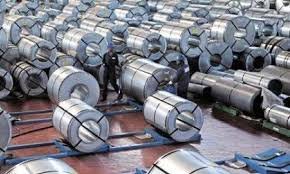India’s Core Sector Growth Rises to 6.2% in April
India’s core sector growth witnessed a substantial rise, reaching 6.2% in April. This surge marks a significant recovery from the previous month’s growth rate of 6.1%. The core sectors, comprising coal, crude oil, natural gas, refinery products, fertilizers, steel, cement, and electricity, play a crucial role in driving the country’s economic progress.
The surge in growth is attributed to various factors, including increased production and demand across several sectors. Notably, sectors like steel, cement, and electricity have shown remarkable improvement, contributing significantly to the overall growth rate. This positive trend indicates a strengthening of the industrial backbone of the Indian economy.
Despite facing challenges such as supply chain disruptions and input cost pressures, the core sectors have demonstrated resilience and adaptability. The government’s initiatives to boost infrastructure development and manufacturing activities have also played a vital role in stimulating growth across these sectors.
However, experts caution that sustaining this growth momentum will require continued efforts to address underlying structural issues and enhance competitiveness. Investing in technology, innovation, and skill development will be essential to ensure long-term sustainability and resilience of the core sectors.
In conclusion, the surge in India’s core sector growth to 6.2% in April reflects a promising trajectory for the country’s economy. While challenges persist, proactive measures and strategic interventions can further bolster the resilience and competitiveness of the core sectors, driving overall economic growth and development.

Why this News is Important:
Significant Economic Indicator: The rise in India’s core sector growth to 6.2% in April holds immense significance as it serves as a crucial economic indicator. The core sectors, including coal, steel, cement, and electricity, form the backbone of the economy and their performance reflects the overall health and growth trajectory of the country.
Impact on GDP Growth: The growth of core sectors has a direct impact on the Gross Domestic Product (GDP) growth rate. A robust performance in these sectors indicates a favorable outlook for economic expansion, job creation, and investment opportunities, which are vital for achieving sustainable development goals.
Implications for Government Policies: The government closely monitors the performance of core sectors as it informs policy decisions and strategic interventions aimed at promoting growth, enhancing competitiveness, and fostering industrial development. The surge in core sector growth underscores the effectiveness of policy measures and stimulus packages in stimulating economic recovery.
Historical Context:
Background Information: India’s core sector comprises eight key industries: coal, crude oil, natural gas, refinery products, fertilizers, steel, cement, and electricity. These sectors are critical for infrastructure development, industrial production, and overall economic growth. The performance of core sectors is closely monitored as it has a significant bearing on the country’s GDP and industrial output.
Previous Trends: Over the years, India’s core sector has witnessed fluctuations in growth rates due to various factors such as global economic conditions, domestic demand-supply dynamics, and policy reforms. The sector has experienced periods of robust expansion as well as slowdowns, reflecting the inherent volatility and challenges faced by the economy.
Policy Interventions: The government has implemented several policy initiatives and structural reforms to promote growth and competitiveness in core sectors. Measures such as liberalization, privatization, and infrastructure development have been undertaken to enhance productivity, efficiency, and sustainability across key industries.
Key Takeaways from “India’s Core Sector Growth Rises to 6.2% in April”:
| Serial Number | Key Takeaway |
|---|---|
| 1 | Core sector growth in India surged to 6.2% in April. |
| 2 | Steel, cement, and electricity sectors showed notable improv ement. |
| 3 | The rise in growth indicates a strengthening of India’s industrial backbone. |
| 4 | Sustaining growth momentum requires addressing structural challenges and enhancing competitiveness. |
| 5 | Government initiatives to boost infrastructure and manufacturing activities have contributed to growth. |
Important FAQs for Students from this News
What are the core sectors mentioned in the article?
A: Coal, crude oil, natural gas, refinery products, fertilizers, steel, cement, and electricity.
What factors contributed to the rise in India’s core sector growth in April?
A: Increased production and demand across several sectors, particularly steel, cement, and electricity.
Why is the performance of core sectors important for the economy?
A: Core sectors form the backbone of the economy and their performance reflects overall economic health, GDP growth, and employment generation.
What challenges do the core sectors face despite the growth in April?
A: Challenges such as supply chain disruptions, input cost pressures, and the need for structural reforms to sustain growth.
How do government policies influence the growth of core sectors?
A: Government policies play a crucial role in promoting growth, competitiveness, and investment in core sectors through initiatives such as infrastructure development and stimulus packages.
Some Important Current Affairs Links


















